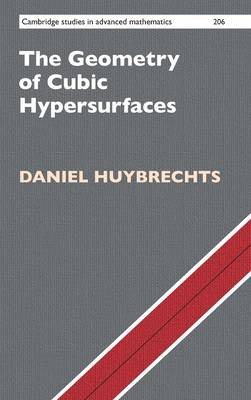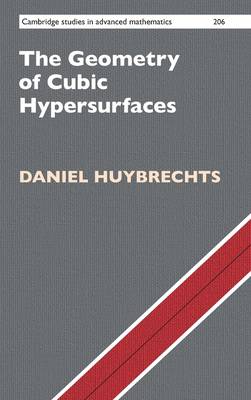
- Afhalen na 1 uur in een winkel met voorraad
- Gratis thuislevering in België vanaf € 30
- Ruim aanbod met 7 miljoen producten
- Afhalen na 1 uur in een winkel met voorraad
- Gratis thuislevering in België vanaf € 30
- Ruim aanbod met 7 miljoen producten
Zoeken
Omschrijving
Cubic hypersurfaces are described by almost the simplest possible polynomial equations, yet their behaviour is rich enough to demonstrate many of the central challenges in algebraic geometry. With exercises and detailed references to the wider literature, this thorough text introduces cubic hypersurfaces and all the techniques needed to study them. The book starts by laying the foundations for the study of cubic hypersurfaces and of many other algebraic varieties, covering cohomology and Hodge theory of hypersurfaces, moduli spaces of those and Fano varieties of linear subspaces contained in hypersurfaces. The next three chapters examine the general machinery applied to cubic hypersurfaces of dimension two, three, and four. Finally, the author looks at cubic hypersurfaces from a categorical point of view and describes motivic features. Based on the author's lecture courses, this is an ideal text for graduate students as well as an invaluable reference for researchers in algebraic geometry.
Specificaties
Betrokkenen
- Auteur(s):
- Uitgeverij:
Inhoud
- Aantal bladzijden:
- 458
- Taal:
- Engels
- Reeks:
- Reeksnummer:
- nr. 206
Eigenschappen
- Productcode (EAN):
- 9781009280006
- Verschijningsdatum:
- 29/06/2023
- Uitvoering:
- Hardcover
- Formaat:
- Genaaid
- Afmetingen:
- 152 mm x 229 mm
- Gewicht:
- 843 g

Alleen bij Standaard Boekhandel
+ 245 punten op je klantenkaart van Standaard Boekhandel
Beoordelingen
We publiceren alleen reviews die voldoen aan de voorwaarden voor reviews. Bekijk onze voorwaarden voor reviews.











